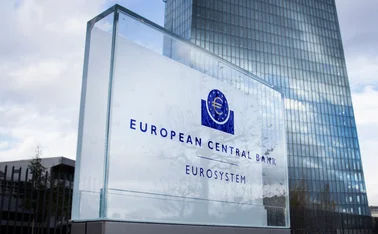
EBA recommends changing basis of resolution finance
“Crucial” that new measure reflect ability to call on funds in case of resolution crisis, EBA says

The European Banking Authority (EBA) has recommended changes to how Europe's regulators calculate the amount of funds banks must contribute to resolution finance arrangements.
The resolution finance facility is paid into by all European banks and will be used under the Bank Recovery and Resolution Directive (BRRD) to supplement 'bailed in' funds when a bank needs resolution. Resolution finance funds are intended to play a "secondary role" to the funds provided by shareholders and senior creditors, the EBA notes.
Currently the BRRD mandates banks in the European Union to pay an amount equal to least 1% of their covered deposits by December 31, 2024. This amount is to be paid ex ante, before the need for any specific resolution. The EBA recommends that this formula be replaced by one of three measures based on a bank's total liabilities.
These are total liabilities excluding own funds, less covered deposits; total liabilities including own funds; and total liabilities excluding own funds. All three of these options have the "key advantages" of consistency with the regulatory framework and methodology for contributions, simplicity and transparency, the EBA says.
It is "crucial" that the basis for resolution finance include all institutions covered by the BRRD and that it accurately reflects regulators' ability to use the funds if needed. The first recommended option is particularly strong in that regard, it notes. The other options considered as bases for resolution finance have "major disadvantages", the report says.
The EBA lists a number of disadvantages with the existing approach of using covered deposits as the basis, including its failure to adequately cater for losses from investment firms, and the lack of any "obvious causality between changes to covered deposits and the need for resolution financing arrangements".
The EBA made the recommendation to the European Commission, the EU's executive body. The Commission must decide whether to recommend a change in European law by December 31.
If the Commission does decide to change the basis of calculating contributions to resolution finance, the EBA says it should also adjust the percentage of the chosen measure paid by banks.
There is no relevant international "best practice" to imitate, the EBA says. Most other jurisdictions do not have a resolution finance facility separate from their deposit guarantee schemes, as the EU does.
Only users who have a paid subscription or are part of a corporate subscription are able to print or copy content.
To access these options, along with all other subscription benefits, please contact info@centralbanking.com or view our subscription options here: http://subscriptions.centralbanking.com/subscribe
You are currently unable to print this content. Please contact info@centralbanking.com to find out more.
You are currently unable to copy this content. Please contact info@centralbanking.com to find out more.
Copyright Infopro Digital Limited. All rights reserved.
You may share this content using our article tools. Printing this content is for the sole use of the Authorised User (named subscriber), as outlined in our terms and conditions - https://www.infopro-insight.com/terms-conditions/insight-subscriptions/
If you would like to purchase additional rights please email info@centralbanking.com
Copyright Infopro Digital Limited. All rights reserved.
You may share this content using our article tools. Copying this content is for the sole use of the Authorised User (named subscriber), as outlined in our terms and conditions - https://www.infopro-insight.com/terms-conditions/insight-subscriptions/
If you would like to purchase additional rights please email info@centralbanking.com
Most read
- Trends in reserve management 2024: survey results
- People: RBI appoints senior officials
- China to start selling ultra-long term sovereign bonds







